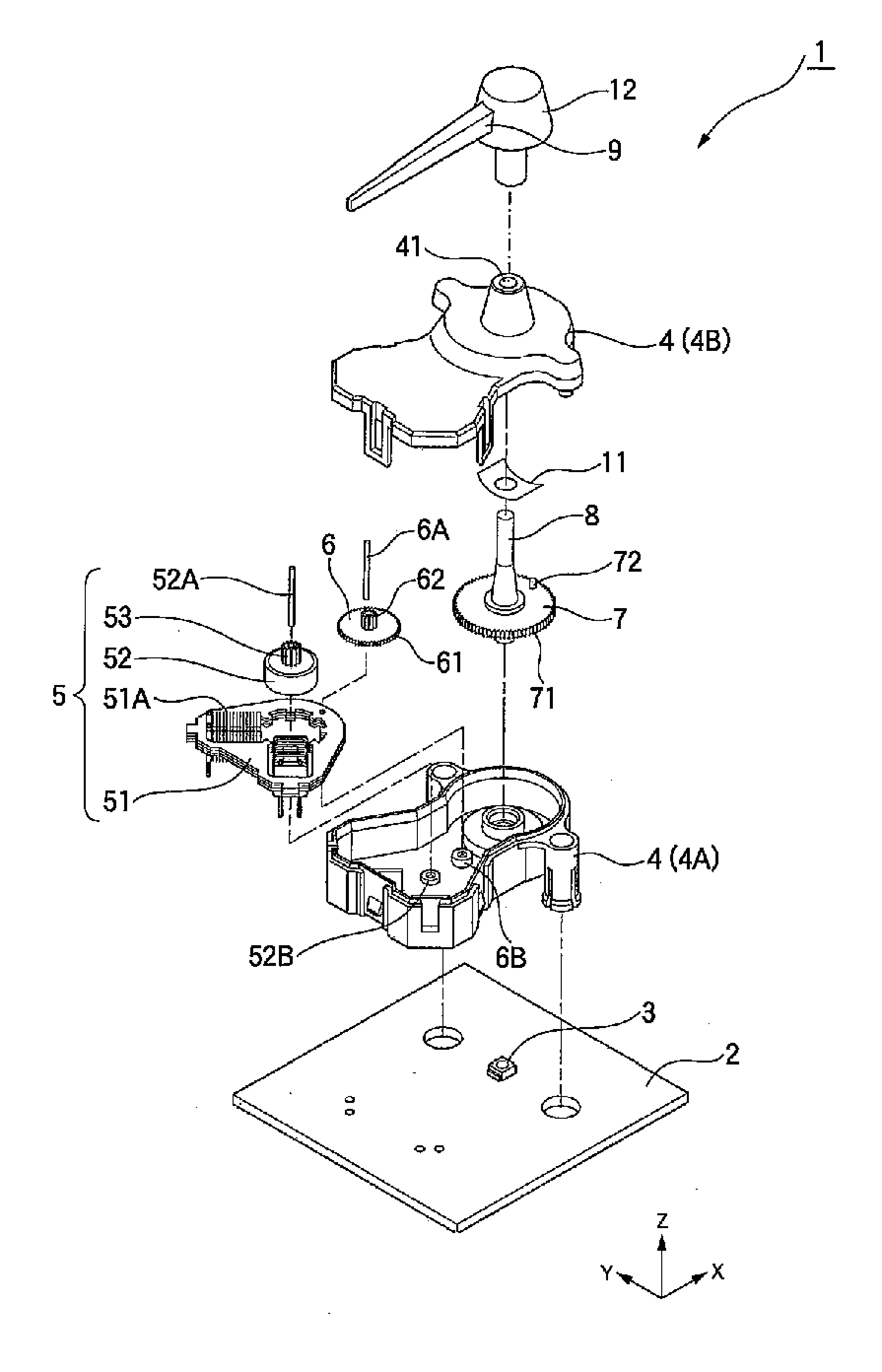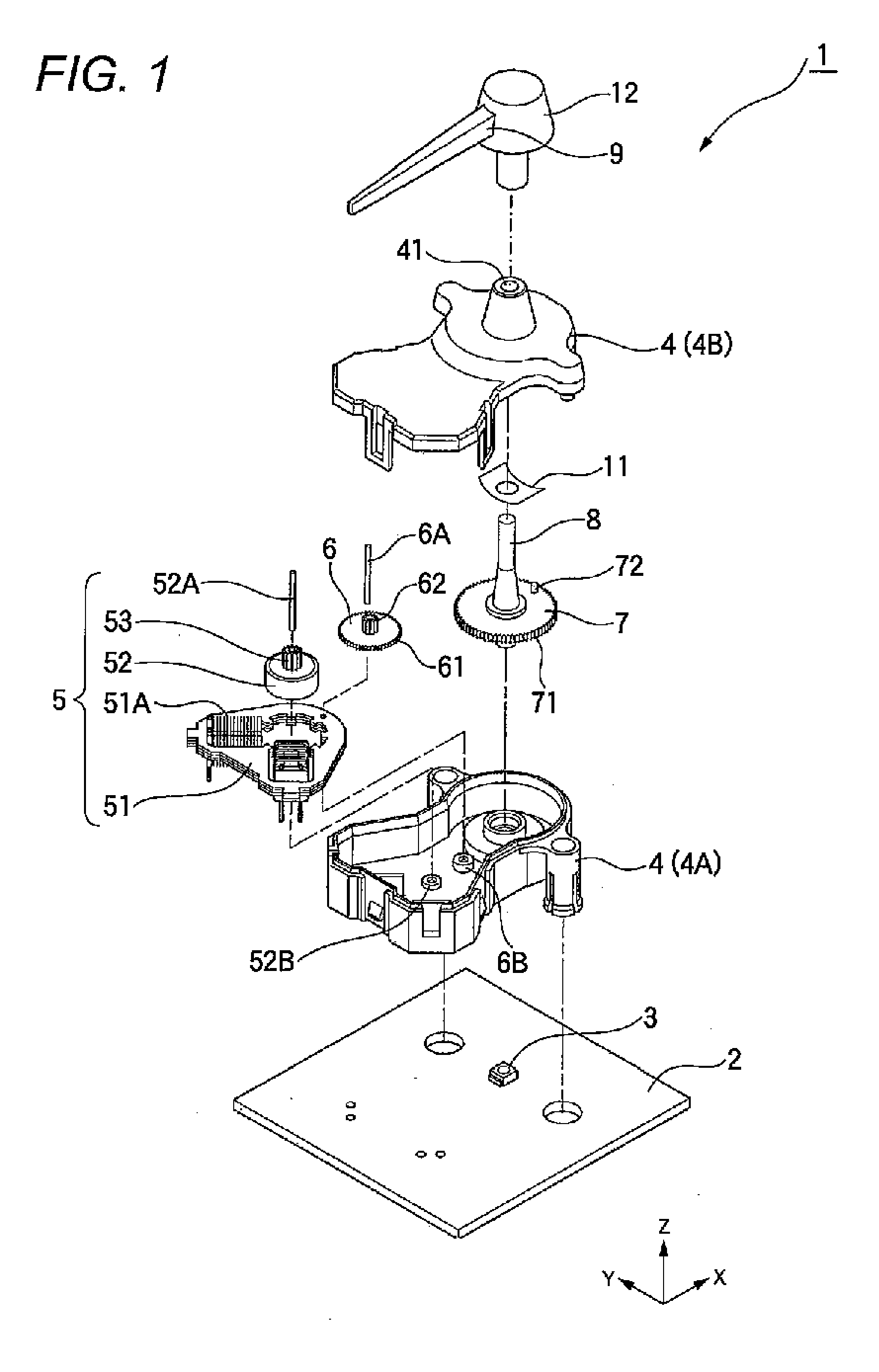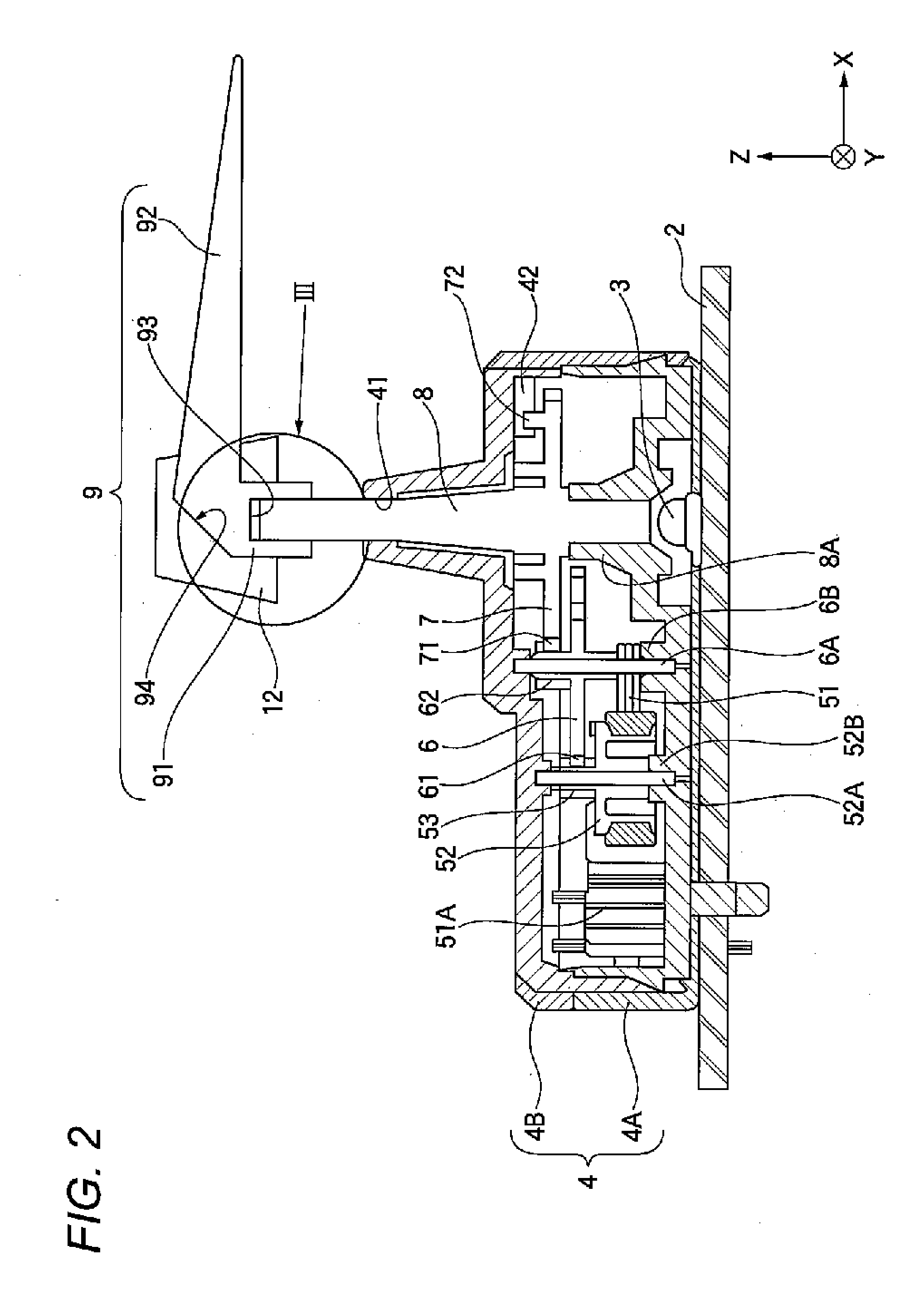Needle attaching structure of rotating shaft and meter device
- Summary
- Abstract
- Description
- Claims
- Application Information
AI Technical Summary
Benefits of technology
Problems solved by technology
Method used
Image
Examples
Embodiment Construction
[0042]Now, an exemplary embodiment of the present invention will be described below in detail by referring to the attached drawings.
[0043]FIGS. 1 and 2 show a meter device 1 having a rotating shaft to which a needle attaching structure of the present invention is applied.
[0044]The meter device 1 includes a light source 3 mounted on a substrate 2, a meter case 4 attached to a prescribed position on the substrate 2 including an area where the light source 3 is mounted and a display plate not shown in the drawing that is arranged on the meter case 4 and displays necessary information about a vehicle itself or an environment in the periphery of the vehicle such as numeric characters, characters, signs or the like.
[0045]The meter device 1 of the present exemplary embodiment forms a part of a combination meter not shown in the drawing. The display plate forming a front surface side is fitted to an entire surface to form a reverse plate. Further, in the display plate, various kinds of disp...
PUM
| Property | Measurement | Unit |
|---|---|---|
| Length | aaaaa | aaaaa |
| Diameter | aaaaa | aaaaa |
Abstract
Description
Claims
Application Information
 Login to View More
Login to View More - R&D
- Intellectual Property
- Life Sciences
- Materials
- Tech Scout
- Unparalleled Data Quality
- Higher Quality Content
- 60% Fewer Hallucinations
Browse by: Latest US Patents, China's latest patents, Technical Efficacy Thesaurus, Application Domain, Technology Topic, Popular Technical Reports.
© 2025 PatSnap. All rights reserved.Legal|Privacy policy|Modern Slavery Act Transparency Statement|Sitemap|About US| Contact US: help@patsnap.com



